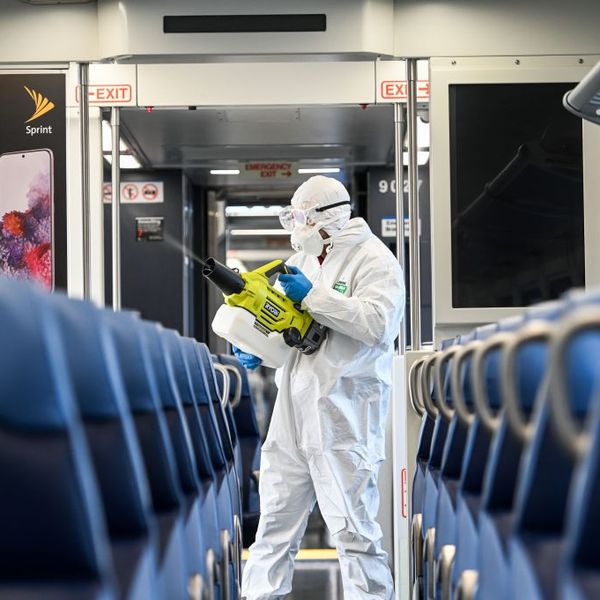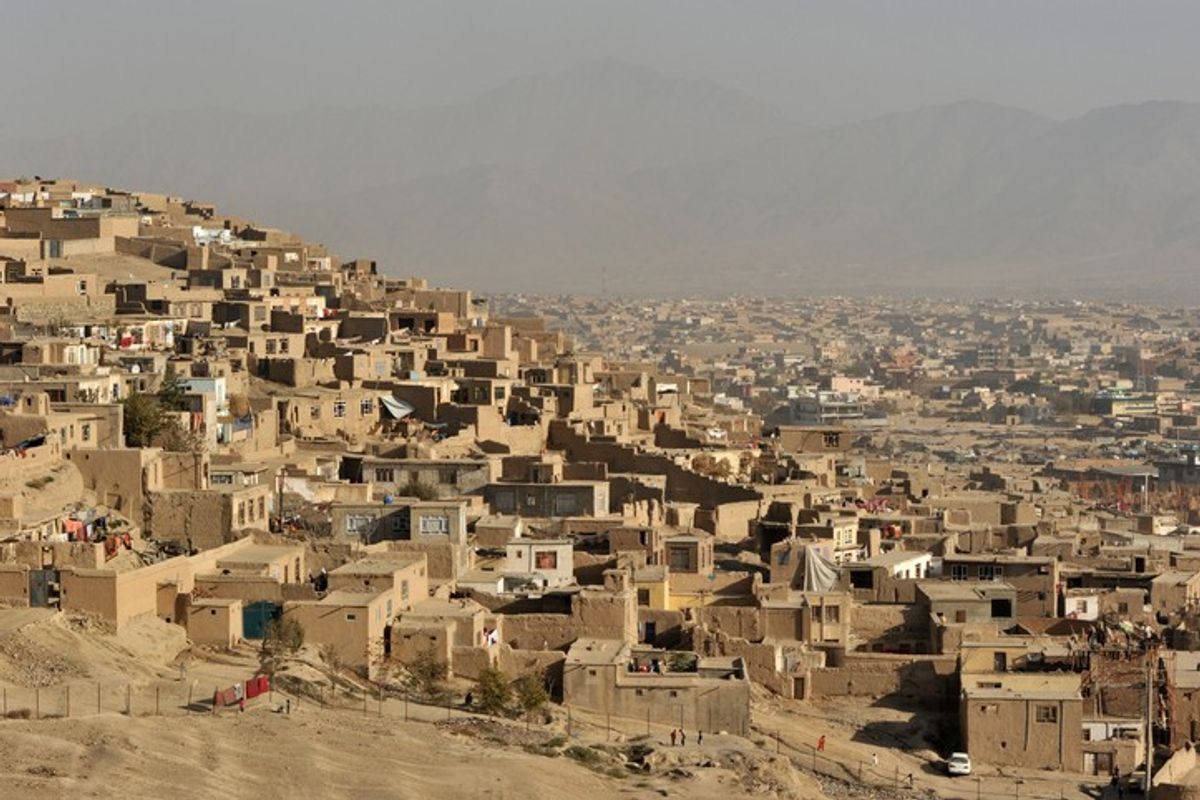A five month-long outbreak of Ebola in the Democratic Republic of Congo has reached dangerous levels and the risk of further spread is high. Thirty-six new cases were reported during the week of November 21 – 27.
The U.S. and the international community are assisting in response and containment, but there is little real global capability to stop outbreaks in insecure areas.
Two months ago, President Trump issued a new National Biodefense Strategy to improve U.S. readiness and resilience to counter biological threats to the homeland.
One hundred years ago, it was the 1918 flu pandemic that killed more than 50 million people worldwide. Seventeen years ago, several U.S. Senate Offices were on the receiving end of envelopes laced with deadly levels of the anthrax virus. Five people died and the attack triggering widespread fear and a massive distribution of antibiotics to everyone who had been exposed. Just that attack alone cost hundreds of millions in clean-up efforts. Just four years ago, the world erupted in crisis once again as an Ebola epidemic spread across West Africa, killing more than 11,000 people.
The U.S. Government has invested billions to develop new capabilities to prevent, detect, and respond to biological threats. Is the U.S. nimble enough, resourced enough, and capable enough to quickly identify and stop biological threats that originate outside of U.S. borders? The answer to that question is no – not yet.
The Cipher Brief’s Todd Rosenblum reached out to Beth Cameron, Vice President for Global Biological Policy and Programs at the D.C.-based Nuclear Threat Initiative (NTI) and asked for her thoughts on the threat and what the U.S. needs to battle it.
A growing threat requires flexible capabilities
Biological threats are variable, changing, and global; they have the capacity to kill millions. Terrorists continue to show interest in biological weapons, and new technologies are making it possible to develop biological weapons that can evade countermeasures. The fraying norm against chemical weapons use has sparked experts to call for a significantly strengthened taboo against the development and use of high consequence biological weapons.
While West Africa recovers from the 2014-2016 Ebola epidemic, a new Ebola outbreak rages in the insecure region of North Kivu in the Democratic Republic of Congo. The new outbreak demonstrates the severe lack of international capability to stop outbreaks in insecure settings, a situation that would be exacerbated in the event of a deliberate bioweapons attack.
The threat posture is getting worse. Expert virologists have recreated horsepox, a near neighbor of the virus that causes smallpox, from scratch, and for only about $100,000. Public health experts also continue to carefully watch naturally occurring outbreaks, like H7N9 influenza, with the potential to cause significant harm if given the ability to become a pandemic.
There is no panacea for quelling these threats and the next crisis isn't likely to be the one we are expecting. Taken together, they require a complex and outward-looking strategy. But, there are a few things the United States can do – now – and before the next crisis emerges.
Biodefense resourcing is confusing and requires White House leadership to ensure it remains a priority for appropriators.
Biodefense policy has been an area of relative bipartisan agreement for nearly two decades, although past Administrations and the Congress have struggled to adequately prioritize and resource biodefense because funding lines are split across many Congressional committees and executed by at least 10 different federal departments and agencies.
In the good news category, the Trump Administration’s long-awaited National Biodefense Strategy integrates U.S. homeland biodefense policies with outwardly facing biosecurity and health security capacity building. This is a step forward, and builds on lessons learned from the last three Administrations. But unfortunately, there are still significant gaps, and multiple components of the biodefense mission are not adequately resourced. The new strategy relies on leadership from the Health and Human Services Secretary, so there’s no clear path for homeland and national security-related biodefense priorities to be jointly considered in the budget.
The Trump Administration’s decision to disband the NSC directorate, tasked explicitly and solely with health security and biodefense, and thus far not naming a Deputy-level White House lead for pandemic response, is creating an important policy and priority gap for national biodefense and outbreak response. Presidents George W. Bush and Barack Obama were both surprised by outbreaks that affected America in unanticipated ways. They each made the decision to appoint a senior White House leader for biodefense and outbreak response. President Trump should fill these organizational voids.
The U.S. should ramp up homeland programs and science diplomacy efforts to reduce biological risks associated with advances in technology, improve real-time disease detection, and advance on-demand countermeasures development.
The United States faces two competing biotechnology realities: dangerous microbes can now be created and modified by experts from scratch, and a robust U.S. bioeconomy may hold the key to a future with better drugs and vaccines, as well as improved food security.
In 2004, the U.S. National Research Council released its self-described first report to address national security in the life sciences. Regulations and rules that followed were a good start. But it took over a decade to craft these rules, and they focus on oversight for U.S. federally-funded institutions working with specific lists of agents. They generally ignore the growing global biotechnology industry focused on making new materials using biological systems. This gap must be closed.
The U.S. should regularly update its suite of policies that relate to life sciences dual use research and material control for dangerous biological agents to reduce biological risks associated with advances in technology.
• The U.S. should place a high priority on diplomatic outreach to encourage international partners require foreign researchers and companies to evaluate and reduce biological risks, while new technologies are being funded and developed.
• Researchers, investors, publishers, and philanthropists should take more ownership for recognizing and reducing biological risks. Technology developers should spur biosecurity innovation and investment, and they should shun and decline to finance irresponsible bioscience.
• The U.S. government should support new norms and innovative biosecurity approaches while also providing the financing and leadership required to build the bioeconomy of the future.
I am optimistic about the potential. NTI recently launched a new effort that convenes energetic technical leaders from around the world who seek to create new incentives to identify and reduce biological risks and there is growing consensus on this front.
In addition, The U.S. government needs to set defined, resourced goals to achieve real-time biosurveillance and on-demand medical countermeasure development. Department of Homeland Security programs like Biowatch and the National Biosurveillance Integration Center have been criticized for not being nimble enough or able to keep pace with technological developments. Fortunately, spending is increasing for the Department of Health and Human Services’ Biomedical Advanced Research and Development Authority (BARDA). While improving, we are still far from achieving the ambitious recommendations laid out in 2016 by the President’s Council of Advisors on Science and Technology (PCAST) that said “…not more than 6 months will be required to design, develop, manufacture, clinically test, and license vaccines and antibodies against many types of pathogens…”
Strong international capability to stop outbreaks at their source relies on global manufacturing and streamlined mechanisms for sharing data and samples. And there is this promising news: the Coalition for Epidemics Preparedness Innovation (CEPI), was launched in January 2017 to tackle persistent global market challenges with development and equitable distribution of medical countermeasures. It is an excellent start. The U.S. should support CEPI and provide reliable incentives for companies to invest in epidemic preparedness. Similarly, the United States and its partners should consider whether a global biosurveillance mechanism could make a commensurate downpayment toward achieving real-time sharing and analysis of outbreak data world-wide.
The United States should continue to advance the Global Health Security Agenda (GHSA).
President Obama spearheaded the 2014 launch of the GHSA. In early November 2018, with strong support from the Trump Administration, the GHSA was extended for another five years. Since its launch, and for the first time, over 80 countries have undergone and are transparently publishing the results of external analyses of pandemic preparedness. This is good news and the United States should continue its leadership role in spurring financing and technical support to fill identified gaps. This means expanding U.S. programming in Fiscal Year 2020 for global health security at CDC, USAID, State and DoD. It also means retaining U.S. personnel overseas who are the tip of the U.S. biodefense spear for investigating and stopping outbreaks before they spread.
As the United States prepares for a future in which biological agents are easier, cheaper, and more globally available, its playbook needs to be flexible and its biodefense programs must be well financed and predictable. The U.S. sphere of influence for countering biological threats must extend far beyond its borders, and international partnerships are essential. Effective homeland biodefense is only possible if recognized as a global endeavor.
Beth Cameron is the Vice President for Global Biological Policy and Programs at the D.C.-based Nuclear Threat Initiative (NTI). She was President Obama’s senior director for global health security and biodefense at the National Security Council. Cameron was instrumental in developing and launching the Global Health Security Agenda which addressed homeland and national security threats surrounding biosecurity and biosafety, biodefense, emerging infectious disease threats, biological select agents and toxins, dual‐use research, and bioterrorism.













